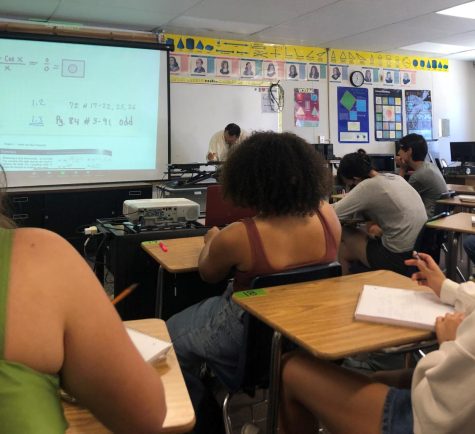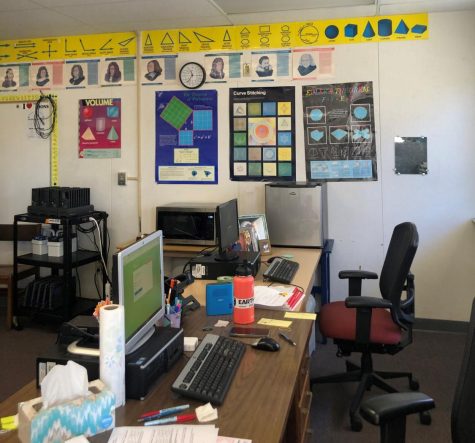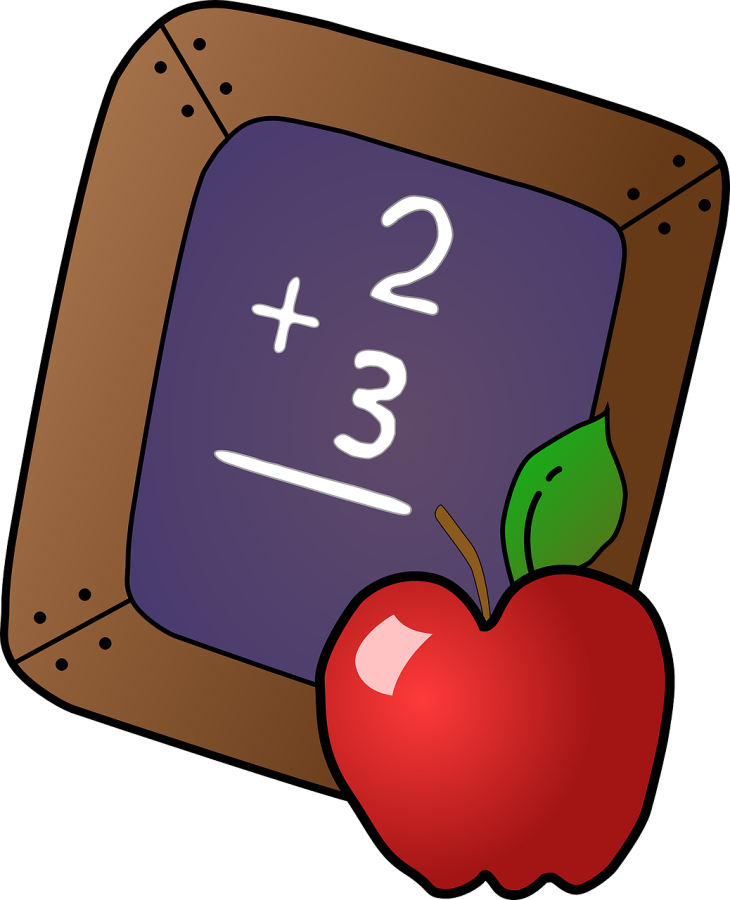Math framework revision sparks debate over instructional strategies for the future
September 3, 2022


While most math equations always lead to a clear answer, discerning how to teach mathematics to California’s six million students has a solution that remains constantly elusive.
For decades, the engine that has been running California’s K through 12 math curriculum lies in a 900-page document full of education jargon titled the “Mathematics Framework for California Public Schools.” This framework outlines the recommended structure and organization of the instructional programs that address the goal of developing a student’s greatest understanding of math.
The framework, however, is not a mandate and is only intended to offer guidance on translating state standards. Districts hold the authority to adopt or reject the framework’s suggested lessons, tactics or strategies as they see fit.
Every eight years the framework will go through periods of revision where an assortment of professionals and agencies, such as the Instruction Quality Commission (ICQ) and State Board of Education (SBE), convene in an effort to create up-to-date and efficient learning material using the latest insights in pedagogy. The last revision, in 2013, provided guidance on the implementation of the Common Core Curriculum.
Now, in a process that began in 2021, the framework faces another set of substantial revisions.
California ranks in the bottom quartile among all states and U.S. territories for eighth grade math scores on standardized tests. That low standing is the primary driver of the new framework.
Mike Torres, director of the curriculum and instructional resources division at the California Department of Education says that because of California’s low proficiency rates in mathematics, designers of the new framework aim to increase students’ levels of mathematics understanding as well as prepare students for college and careers.
To achieve this, designers suggested pushing Algebra 1 back to ninth grade, de-emphasizing pathways to calculus, and applying more social justice principles to math lessons.
After these initial changes were proposed in February 2021, a 60-day public review period commenced which saw the growth of a heavy opposition force consisting of parents as well as educators. Torres said there were a total of 900 public comments during this review period.
Those in opposition complained the framework focuses too heavily on social justice-related topics that they said ultimately distract students from learning actual math.
In a Nov. 19, 2021 article titled “Understanding the debate behind California’s new math framework,” CalMatters reporter Joe Hong stated the framework calls “for more related and practical instruction, whether that be through using more inclusive pronouns or word problems related to real-world issues like housing and climate change.” He added, “To critics that sounds perilously like dumbing down math.”
The framework has also been called out for the recommendation that teachers refrain from labeling students as naturally talented in math. This, and the proposal to move Algebra 1 to Ninth grade, has led to accusations from parents and education that it holds back “gifted” students.
Brain Conrad, a math professor from Stanford who oversees undergraduate math, says not enough students are pursuing STEM majors. Conrad doesn’t dispute that math instruction needs to be better and more interesting but the solutions the IQC has proposed in the name of equity, will harm, not help, Black and Hispanic students who are underrepresented in STEM fields.
John Fendsterwald, a reporter for the education news publication EdSource says many college professors “worry that the framework, if adopted as proposed, will leave students underprepared for college math and will create obstacles for students who might have chosen STEM.”
On the other side, Hong reported in his article that “advocates of the proposed framework argue that critics are too fixated on protecting students who are already excelling in math. In California, these students tend to be white, East Asian or come from more affluent households.”
The article quoted Ben Ford, a mathematics professor at Sonoma State University and one of the framework authors, who said, “The people who advocate for traditional methods see the goal of math instruction as finding the brilliant ones and helping the other ones just get through life. We’re thinking about the people we miss. That’s the motivation for a lot of us working on the framework.”
Unable to settle the acrimonious debate that raged following the first public session, a second 60-day review session occurred between March and May of this year. A total of 700 public comments were provided.
“With the second review period concluding in April of this year the IQC is in the middle of taking that feedback and prepping a version of the document that will go before the State Board of Education,” Torres said.
According to a timeline provided by the California Department of Education, the State Board of Education is scheduled to take action on the framework sometime in 2023 but no specific date has been set.


